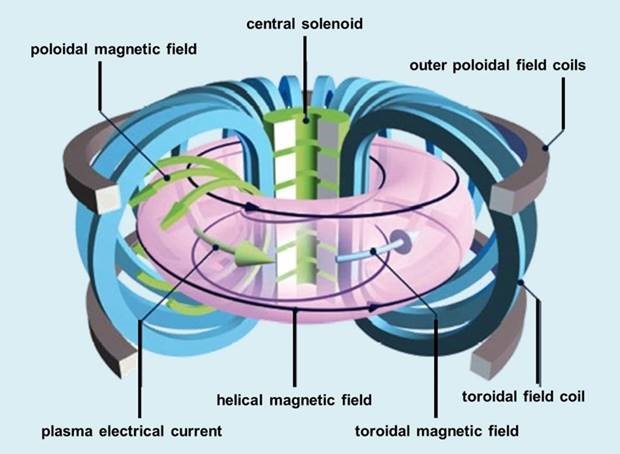The history of rocket engine development is, in essence, a quest for achieving the highest possible specific impulse and power. Ideally, the perfect engine would also be simple in design and use safe fuel. Balancing these often conflicting demands, the fusion engine emerges as one of the most promising solutions to date.
Types of thermonuclear reactions
At first glance, a thermonuclear rocket engine — also known as a fusion engine — resembles a nuclear one. In both cases, we generate thermal energy by transforming atomic nuclei. The key difference lies in the processes: a nuclear engine splits large atoms into smaller ones, while a thermonuclear engine fuses smaller atoms to create larger ones. The general belief is that a thermonuclear engine will be more powerful than a nuclear one. However, it’s worth taking a closer look at the specific thermonuclear reactions involved to better understand their potential.
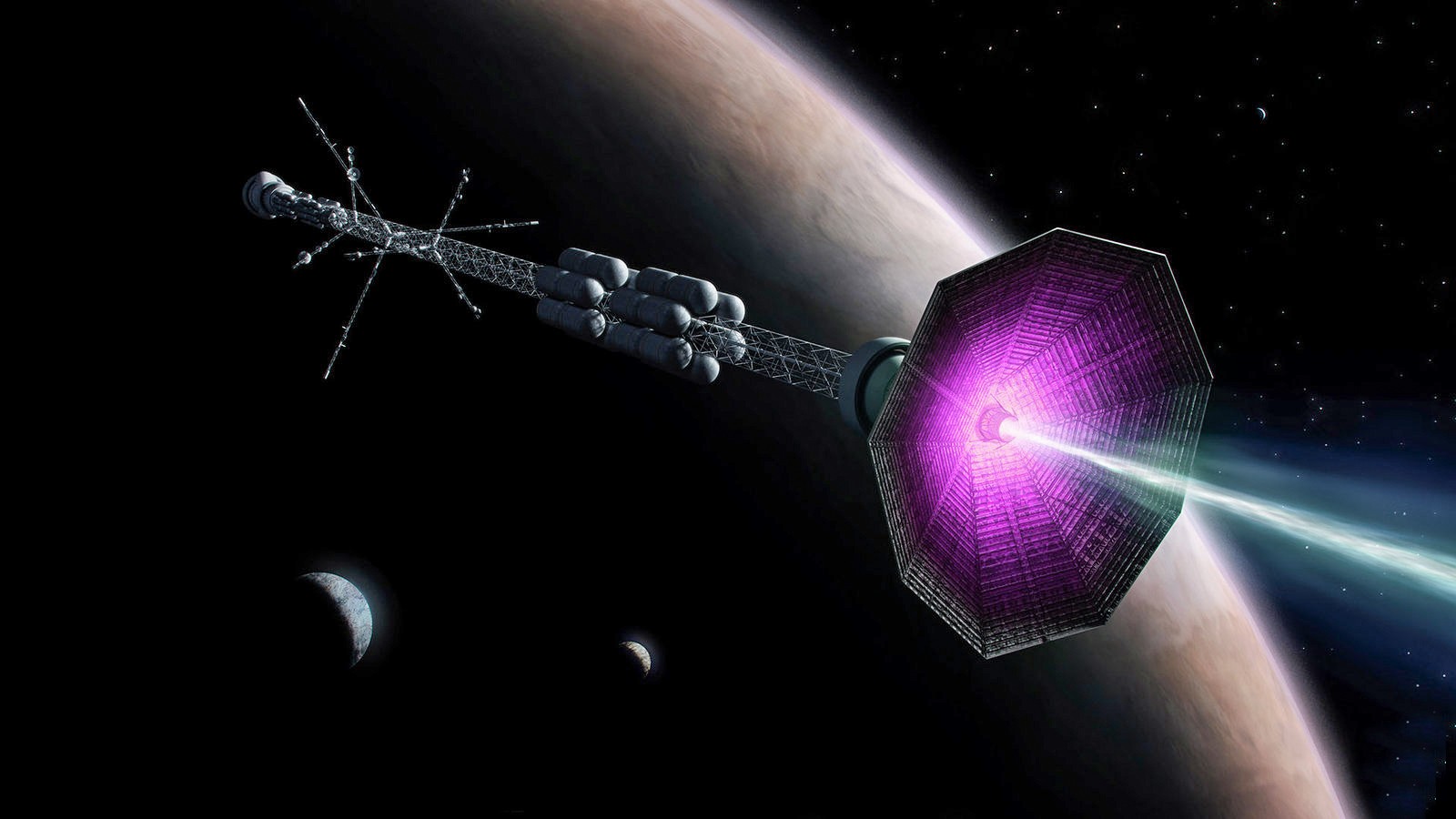
First off, thermonuclear engines, just like their nuclear counterparts, include both direct and indirect power systems. Indirect fusion drives are similar to ion and plasma engines, but they get their energy from a fusion reactor. Though they pack a punch, they still come with the same limitations as other ion and plasma thrusters.
With direct fusion drives (DFDs), the specific impulse comes from a thermonuclear reaction happening right in the chamber. There are a few options for the core process, most notably the proton-proton chain that powers thermonuclear reactions in every star. Here’s how it goes:
p + p → 2H + e⁺ + νe + 0.42 MeV
2H + p → 3He + γ + 5.49 MeV
3He + 3He → 4He + 2p + 12.85 MeV
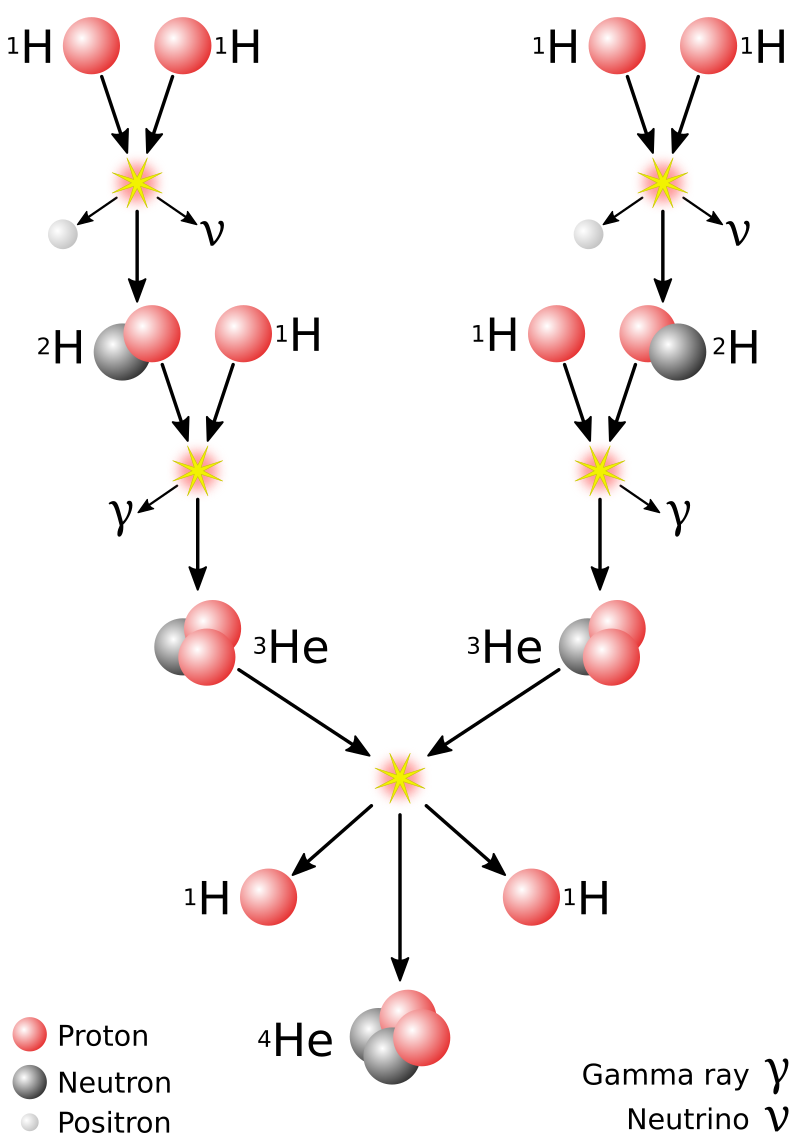
A complete proton-proton chain offers a great energy output, potentially delivering a specific impulse of thousands of miles per hour and plenty of power. However, we can’t currently achieve the conditions needed for this reaction. It requires high temperatures and pressures created by gravity in stars, and we haven’t figured out how to effectively replicate that with magnetic fields.
The second possible reaction is deuterium-tritium:
2H + 3H → 4He + n + 17.6 MeV
This reaction also produces a significant amount of energy. The starting materials are fairly common, and modern technologies make it relatively simple to implement. By relatively simple, we of course mean it’s theoretically doable with current tech. So, when people discuss thermonuclear engines, they usually focus on deuterium-tritium reactions, which could potentially deliver more power than nuclear ones. The main challenge with this reaction is the large number of neutrons it produces. These neutrons not only seep vast amounts of energy but also bombard everything around them, requiring heavy shielding around the engine — essentially turning it into a neutron bomb.
The third possible reaction is deuterium-helium-3:
2H + 3He → 4He + p + 18.3 MeV
This reaction is considered to be another highly promising option, as it’s more powerful than deuterium-tritium and doesn’t produce a large excess of neutrons. From a technical standpoint, building an engine based on this reaction isn’t much more complex. However, helium-3 is quite rare. Even the tiny deposits found on the Moon—just 0.01 grams per ton of regolith—could be a major reason to establish a lunar base.
There are a few other potential thermonuclear reactions, though they aren’t as popular:
- p + 6Li → 4He (1.7 MeV) + 3He (2.3 MeV)
- 3He + 6Li → 2 4He + p + 16.9 MeV
- p + 11B → 3 4He + 8.7 MeV
While these reactions don’t produce excess neutrons, they either have low energy output or require rare materials for fuel, which makes them less appealing.
Main challenges in developing fusion rocket engines
Essentially, a fusion rocket engine is like a thermonuclear reactor that’s open on one end to release mass and energy. This means it shares the same challenges as the fusion reactor. First off, these reactions occur at extremely high temperatures—hundreds of millions of degrees. Additionally, a few key conditions must be met for it to function. Not only do you need to maintain all that intense heat for a long time, but the resulting superheated plasma can’t in any way damage the engine or reactor itself.
The theory for tackling these issues is solid and has been around for quite a while. We’ve been building thermonuclear reactors for decades, but it’s only recently that some prototypes have achieved energy outputs that justify their costs. So far, we haven’t managed to achieve a stable thermonuclear reaction that can reliably produce electricity. It’s one thing to have ambitious theories, but putting them into practice is a whole different ball game.
Things are even tougher with thermonuclear engines. The first article describing a fusion engine was published back in 1958, but no prototype has been built since then, and none of the proposed projects have moved beyond the concept stage. Still, there are currently several designs for engines that could generate thrust from a thermonuclear reaction without a risk of explosion. Let’s examine the major players.
Magnetic confinement fusion (MCF)
The first method for creating a fusion rocket engine involves turning a fusion reactor with magnetic confinement of plasma into an open system, often called a “magnetic bottle.” In reactors like tokamaks and stellarators, superheated plasma is confined by magnets to prevent any contact with the walls.
The same principle applies to the fusion engine with magnetic confinement. It doesn’t even have to be airtight; all you need is a strong frame to support the magnetic coils. The fusion would occur continuously within the magnetic field, and the superheated plasma would be expelled through a nozzle like those used in plasma engines, generating constant thrust.
What makes this engine effective is its ability to contain plasma with ease thanks to the low density of the material. However, the main issue here is that we haven’t yet achieved a self-sustaining thermonuclear reaction, and it’s still uncertain whether we could stably maintain it.

The only spacecraft concept that currently incorporates this engine is Discovery II, developed by NASA. The idea is to create a spaceship that can deliver a 172-ton payload from Earth orbit to Jupiter in just 118 days, using 861 tons of hydrogen.
Inertial confinement fusion (ICF)
Another way to power a thermonuclear engine is to detonate a small amount of fusion fuel in the chamber by using a high power laser. This chamber acts like a “magnetic bottle,” but it’s more powerful than MCF, as the density and energy levels are much higher.
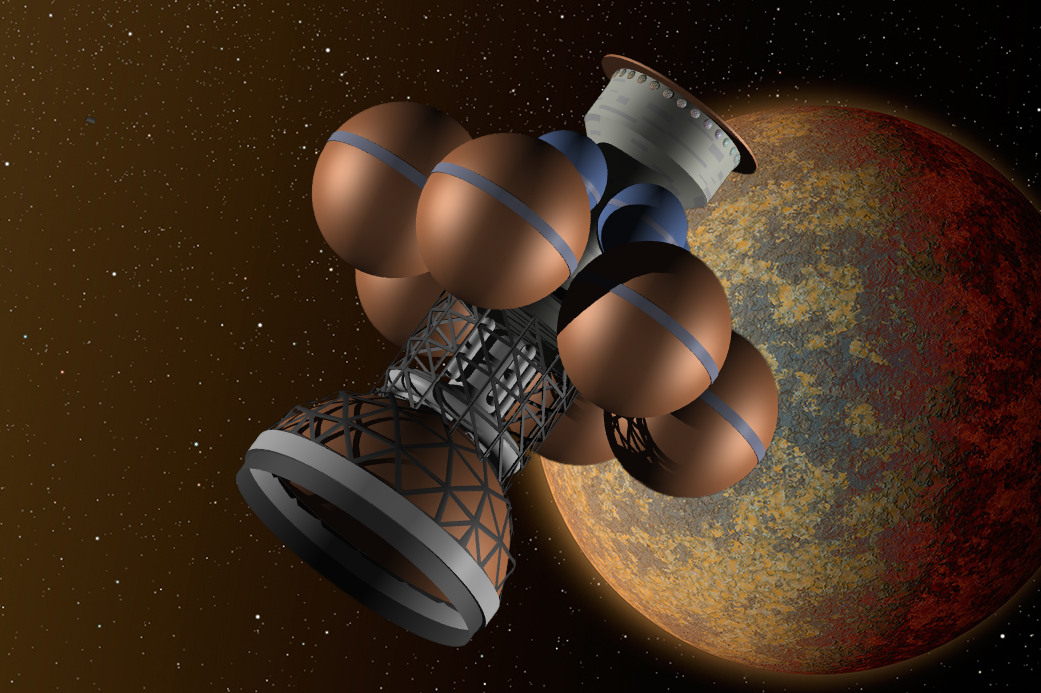
The pros and cons of this engine are, in fact, the complete opposite of the MCF. Detonating a pellet of deuterium, tritium, or helium fuel isn’t an issue; labs have successfully done it many times. The real challenge lies in creating a magnetic field that can be both extremely powerful and reliable.
Unlike the MCF, the internal confinement fusion drive has been proposed before. One notable example is the Daedalus project, introduced by the British Space Society in the 1970s, which aimed to launch the space probe to the Barnard’s Star using deuterium-helium pellets. Another project, VISTA, promised an astonishing specific impulse of about 98 thousand miles per hour. With that kind of momentum, a 100-ton spacecraft could reach Mars and return in just 130 days. However, none of these projects ever got off the ground.
Magneto-inertial fusion (MIF)
The magneto-inertial synthesis is a more modern approach, blending the best features of both MCF and ICF. Just like in magnetic confinement, the plasma is initially heated with an electromagnetic field, which helps maintain its low density. Then, an accelerator sharply compresses the plasma, and at that moment, it’s ignited with a laser.
This means there’s no need to rely on extremely powerful electromagnetic fields all the time, which increases the system’s reliability. Currently, the only spacecraft project using this method is also developed by NASA. It aims to deliver a 164-ton cargo into Jupiter orbit within 250 to 330 days, using 106 to 165 tons of a deuterium-tritium or deuterium-helium mix.
Inertial electrostatic fusion (IEC)
Another potential thermonuclear reactor design is electrostatic plasma containment. Instead of relying on a “magnetic bottle” that still needs an electrical discharge to heat the plasma, you could simply create a powerful electrostatic field that compresses the plasma ions from all sides until a thermonuclear reaction occurs.
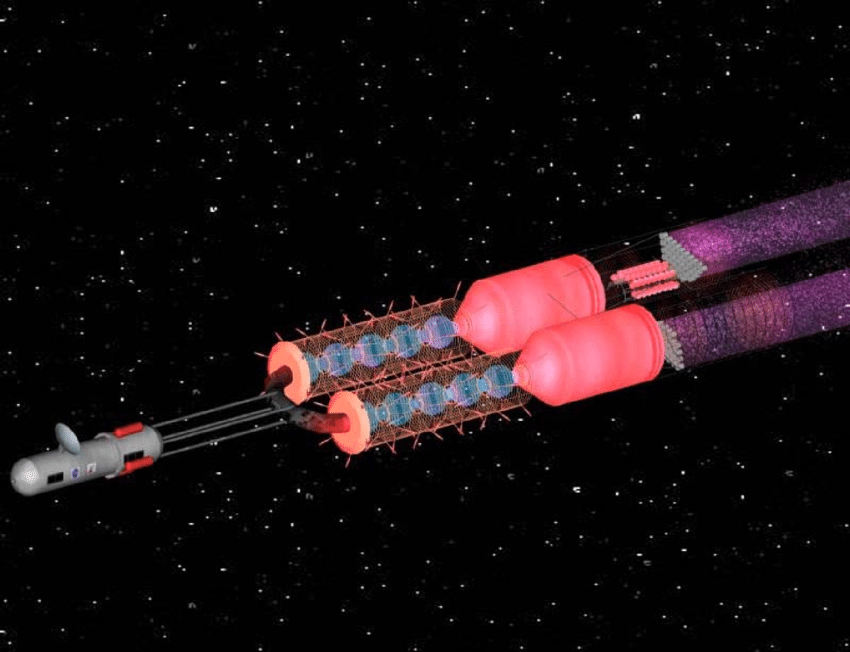
These systems are usually spherical, making them less suitable for direct fusion drives. There are cylindrical electrostatic plasma containment systems that have been around for a while, so they could be a great fit for DFDs.
That said, systems of this type, such as Farnsworth-Hirsch fusors, have mostly been used as neutron sources rather than for energy production. Despite their simplicity, they primarily generate energy in the form of neutrons. Currently, there is a spaceship project based on electrostatic plasma containment called Fusion Ship II, developed at the University of Illinois.
Antiproton-catalyzed microfusion (ACMF)
It’s worth mentioning thermonuclear engines that use antimatter-catalyzed nuclear pulse propulsion. Also known as antimatter initiated microfusion engines, they shouldn’t be confused with antimatter annihilation engines; the latter derive thrust from the reaction between protons and antiprotons. While antimatter engines are extremely powerful and could, in theory, accelerate ships far more efficiently than nuclear or fusion engines, the astronomical cost of antimatter—far pricier than even helium-3—renders this concept highly improbable for the foreseeable future.
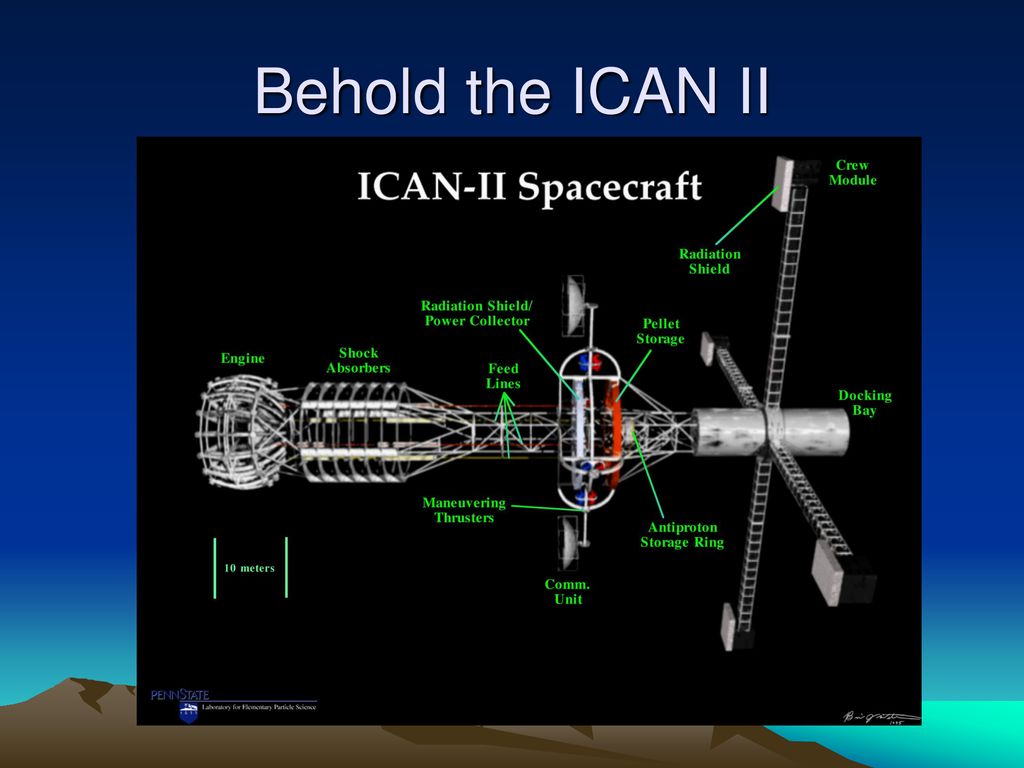
ACMF engines use antmatter only to ignite a small pellet of thermonuclear fuel. This process creates such high energy density that only a tiny amount of antiprotons is needed, offering a promising upgrade for impulse and magneto-inertial systems.
Instead of relying on massive lasers and electromagnetic guns to compress and ignite deuterium-tritium plasma, you could simply use a small tank of antimatter — just a fraction of an ounce for every hundred tons of fusion fuel — and a tiny electromagnetic gun to fire that antimatter at pellets of thermonuclear fuel.
Antimatter-initiated deuterium-helium fusion systems are, from a purely technical standpoint, the simplest and most powerful thermonuclear engines that could be built. In theory, it could be developed even today. However, because it relies on two rare fuel components — helium-3 and antimatter — it would be the most expensive of all options.
Bussard ramjet
In theory, a fusion rocket engine could be powerful enough to achieve relativistic speeds and enable interstellar flights. However, it does come with a major challenge, even for shorter distances. Jupiter-bound spaceships, for instance, would require hundreds of tons of thermonuclear fuel. For missions to other stars, that number jumps to hundreds of thousands, ballooning the already substantial size of the spaceship.
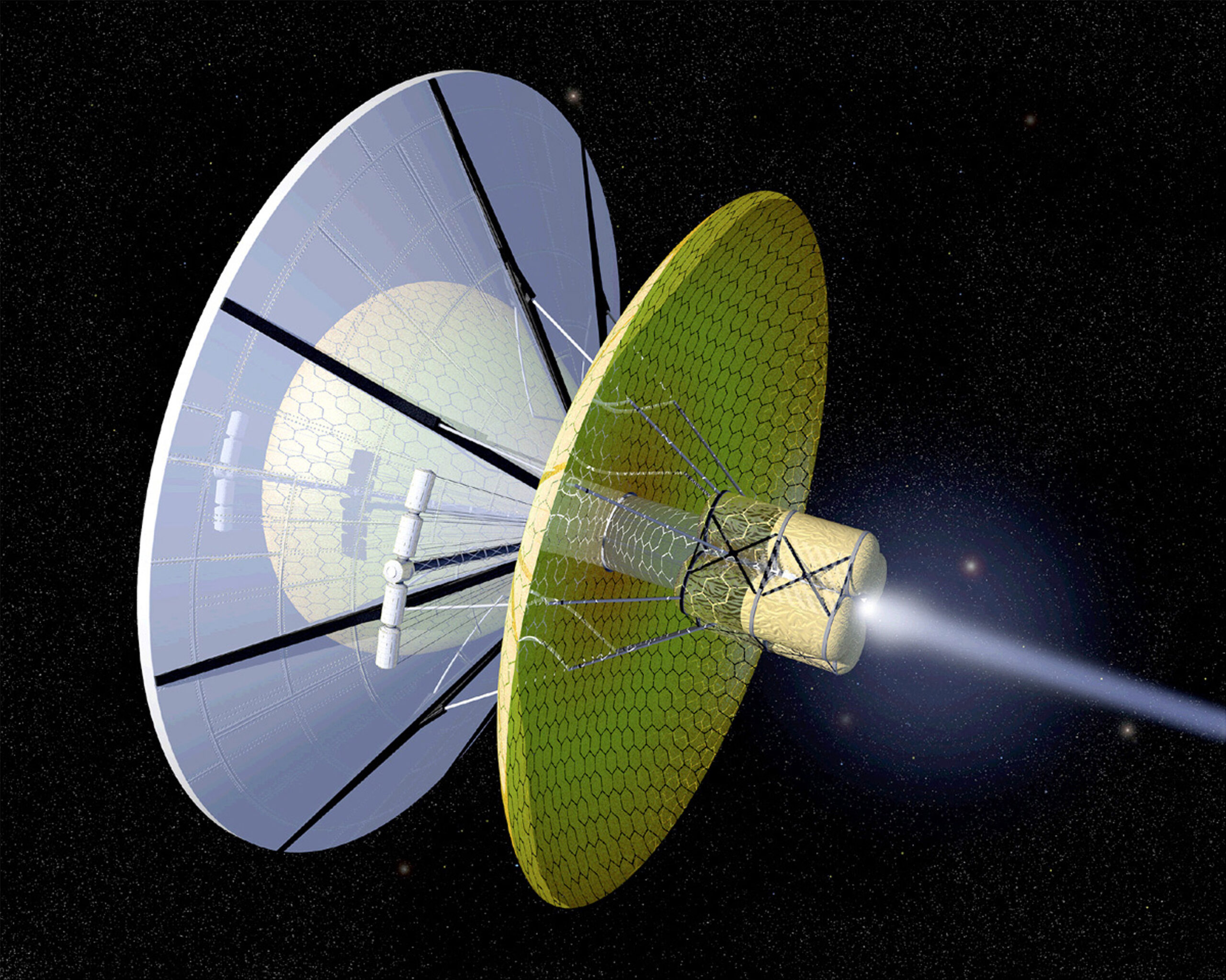
The solution to this problem was proposed in 1960 by physicist Robert Bussard, and his concept is now known as the Bussard fusion system with direct ignition. The idea is that the interstellar medium isn’t completely empty; it contains molecules of matter. A powerful magnetic field can act like an umbrella, opening in front of the ship and harvesting these particles to be used as fuel.
Despite its simplicity, the concept raises a number of challenges even at the theory stage. One major issue is that the interstellar medium is very thin. For the magnetic umbrella to operate effectively, it would need to span tens of thousands of miles in diameter, leading to enormous energy costs.
Then there’s the problem of interstellar medium composition. As it’s mostly hydrogen, rather than deuterium or tritium, the proton-proton cycle would be particularly challenging to implement. One potential solution is to use carbon-oxygen thermonuclear or annihilation reactions, but the effectiveness of this approach is still uncertain.
Another option is to bombard a target made of lithium or boron with harvested protons, which can trigger lithium-proton or boron-proton thermonuclear reactions. However, the energy output from these reactions is relatively low.
Finally, there’s the problem with the magnetic umbrella itself. Not only could it fail to capture particles, but it might also slow down the ship, rendering the entire concept useless.
One possible solution to all of these issues is to have the ship travel along planned routes. This approach would be particularly useful for flights to the outer solar system but could also be adapted for interstellar travel.
It’s based on the idea that it’s much easier to accelerate a cloud of gas to speeds of tens of thousands of miles per second than to accelerate a spacecraft. By knowing the intended flight path, you could “fire” clumps of ionized particles along that section of space, effectively creating a track of concentrated gas that’s easier to collect and use as thermonuclear fuel. Since this substance would be more concentrated, the magnetic umbrella could be smaller, saving energy and reducing drag on the ship. Plus, this flight path could be lined not just with hydrogen but also with deuterium, tritium, or helium, allowing for the use of more powerful thermonuclear reactors.
Is a fusion engine feasible?
There is one caveat to all of this. No one is completely sure that a thermonuclear engine is truly possible. While these concepts look promising in theory, science relies on empirical evidence by testing these hypotheses. In technical fields, that means having a working prototype to validate these ideas.
A thermonuclear rocket engine is a technology that hasn’t yet produced a working prototype yet. It relies on controlled thermonuclear fusion, a method that eludes scientists to this day. While uncontrolled reactions are achievable, they only lead to thermonuclear explosions.
It might turn out that building a fusion engine is acually impossible, leaving our dreams of it as just that — dreams. A pretty disappointing thought, considering that this technology, out of all even remotely plausible concepts, has the potential to make journeys to the outer solar system and beyond a less outlandish notion. Perhaps not as routine as flying, but definitely as familiar as traveling by sea.
Written by: Oleksandr Burlaka, Doctor of Technology.
This article was first published in #6(188) 2021 issue of Universe Space Tech magazine. You can purchase the digital version of the issue in our store.


